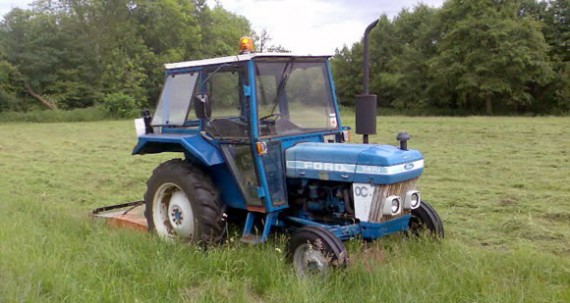Rotational grazing
Dividing grassland up into paddocks and moving stock from one paddock to another makes a useful contribution to managing grassland. It is especially effective if you have different species in your rotation because different species graze differently, and if you can rest the pasture as well.
Cattle
Cattle prefer longer grass because they wrap their tongues round the grass and pull it into their mouths; while they avoid areas where they have dunged, they do not create toilet areas.
Sheep
Sheep prefer short grass, which they cut with their bottom incisors and the horny palate in the upper mouth; sheep do not create toilet areas either.
Horses
Horses have teeth in both top and bottom jaw, so nibble grass. Unlike cows and sheep, horses create toilet areas that they will not graze unless forced to. These areas can become infested with weeds like dock, thistle and nettles. This is probably Nature’s way of reducing contact with gastrointestinal worms.
Rotational grazing allows areas to be rested and topped if necessary.
Topping
Topping is a mechanical operation to cut the sward at a height of about 7.5cm (3”) using a machine designed for the job. A topper is similar to, but not the same as, a mower, which would be used for cutting a full grass crop for conservation – a topper will not cope with cutting a full hay crop. Topping weakens weeds but stimulates grass growth, in much the same way as grazing does.
 A topper in action.
A topper in action.
It should be carried out monthly from June to October, if grazing is not keeping the grass down. Any ragwort in the sward must be dug out and removed before topping, since cutting and wilting increases palatability though the plant remains poisonous.
Worm burden
Rotational grazing also contributes to animal health by reducing the worm burden. Most lung and gastro-intestinal worms are both species specific and are only able to live away from the host species for a limited length of time – usually about 21 days. Rotating different species around areas and / or resting areas on a three or four week cycle will help to break the lifecycles of the worms.
- Previous « Livestock Units
- Next How much forage do I need? »

About Rosemary Champion
Rosemary lives on a 12 acre smallholding in Angus, in the east of Scotland, where she keeps Ryeland Sheep, Shetland cattle and assorted poultry. She was destined to be a smallholder from an early age.
Further Reading
 Weed Management for Organic Farmers, Growers and Smallholders Gareth Davies |  Improved Grassland Management John Frame |










